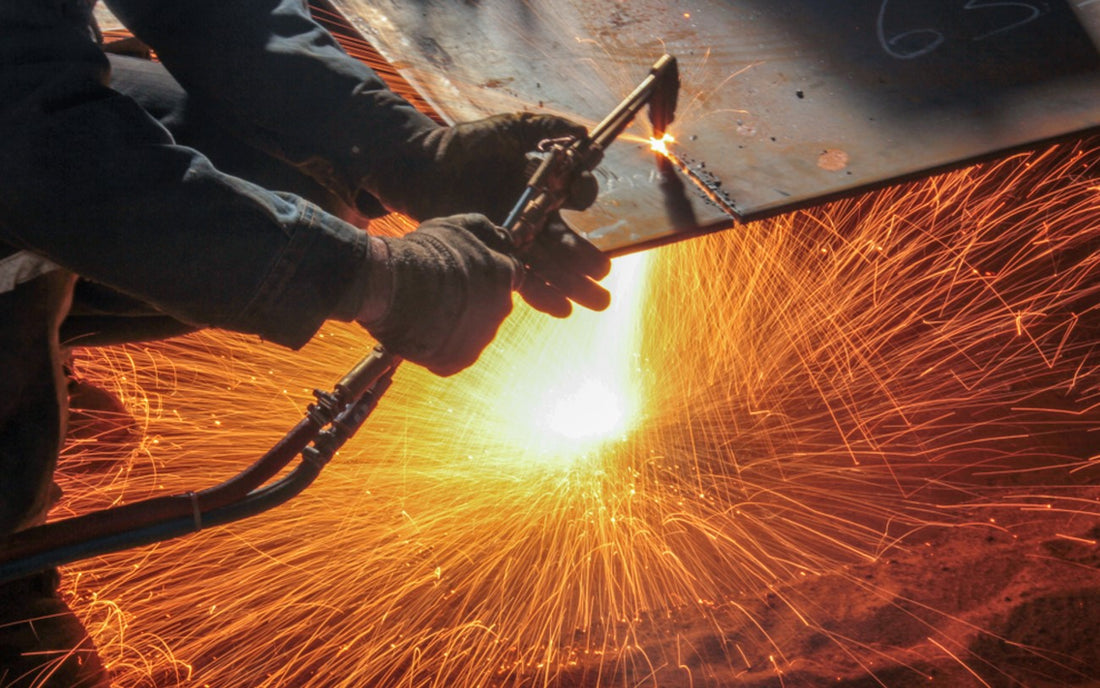We’ll first cover the importance of using proper cutting torch tips. These determine the flame's rate and volume of flow against the workpiece. There are a variety of sizes available, but their basic function is the same: to direct the flow, rate, and size of the flame for your job from small to large.
This article will guide you through choosing the right tips; properly maintaining, cleaning, and caring for them; using them for optimal performance; and answer frequently asked questions about the use of cutting torch tips.

Choosing the Right Cutting Torch Tips
Factors to Consider When Selecting Cutting Torch Tips
There are three factors to consider when selecting cutting torch tips for your job: tip design, metal thickness, its condition, and the pressure conditions of the welding machine and your environment.
Metal thickness is the chief factor when selecting a cutting torch tip. Basically, you need to select a tip that is rated for that thickness or beyond.
You should match the torch tip design to the flame characteristics of the gas fueling your system. Each tip also has an intended use.
Types of Cutting Torch Tips
There are two main types of cutting torch tips that we will discuss today: one-piece and two-piece tips.
You can use one-piece tips with acetylene, MAPP, and propylene. They are made from copper alloy because this type of metal can withstand the heat of this high-temperature (the highest, in terms of fuel sources) cutting process. Also known as acetylene tips, one-piece tips have four to six preheat holes designed to enable light, medium, and heavy preheats.
These preheats should be used with any metal condition, whether clean, dirty, or rusted. Anatomically, one-piece tips are composed of a cutting jet oxygen and preheating flame passages. They also have eight preheat holes that augment the heat required for MAPP or propylene.
Two-pieced tips are anatomically different. They still have the same basic components as one-piece tips but are also composed of an outer shell and a splined insert. These splined inserts prevent you from having to drill the preheat holes needed for both slower- and cooler-burning gasses.
Important to note: two-piece tips are used with some of the same, but also different gasses than the one-piece tips. They are compatible with MAPP, propylene, natural gas, methane, and propane.
**Safety note: Acetylene is an explosive gas. They must be contained and stabilized in containers with porous mass packing material with small cellular pores that can collect the acetylene gas. Please use caution.**
Care and Maintenance of Cutting Torch Tips
To clean cutting torch tips, you’ll need a few items: a stiff wire brush, slip joint pliers, and a tip cleaning rod. You can purchase some of these materials from Ecenrode Welding Supply!
So what do you need to clean from the tips, exactly? Carbon deposits and metal slag causes an imbalance in gas and oxygen, resulting in less-than-optimal performance. These elements can also clog the tips. Watch out for popping sounds if you’re doing a job – this is another indicator that your tip is clogged.
Here’s a step-by-step guide to cleaning your cutting torch tips:
- Turn off the gas and oxygen valves on your cutting torch. Make sure to rotate the valves clockwise to do this.
- Open the torch handle oxygen valve slowly. This will release all of the excess oxygen.
- Use the stiff wire brush to clean the top of the torch tip. This will release metal slag and deposits – the reason why you are cleaning in the first place.
- Using one hand, hold the torch handle, and with your free hand, rotate the tip in a counterclockwise fashion. You may need to use the slip joint pliers to do this. Remove the tip from the cutting torch.
- Work through every preheat hole of the torch tip with the appropriately sized cleaning rod. Usually, cutting tip torch cleaning kits include many rod sizes for different cutting torch tips. Push the rod through the holes, and twist it as you pull back. Repeat this back-and-forth motion several times.
- Using your brush, brush the threads of the handle of your cutting torch at the juncture between the tip and the wire brush. Take care to thread the tip onto the cutting torch handle’s edge until it is tight. Finally, turn the tip halfway with the pliers.
You can also purchase whole torch tip cleaning kits at major home improvement centers.
Frequently Asked Questions
1. What are the most common types of cutting torch tips?
There are only three main cutting torch tip types: one-piece, acetylene, and two-piece.
2. How do I choose the correct cutting torch tip for my project?
You need to factor in tip design, the thickness of the metal you’re cutting, its condition, and pressure conditions for the machine and your environment.
3. How often should I replace my cutting torch tip?
Generally, you should change the tip every 100 lbs. of wire.
4. How do I clean my cutting torch tip?
You need three main cleaning tools: a stiff wire brush, slip joint pliers, and a tip cleaning rod. Remove the tip from the cutting torch using the slip joint pliers. Clean the tip with the cleaning rod, then use the wire brush to clean the threads of the cutting torch handle before replacing the tip.

